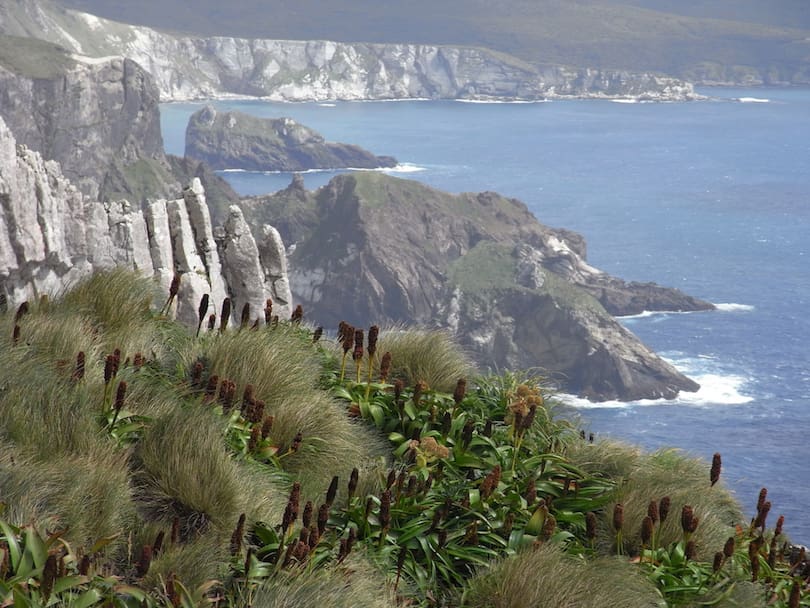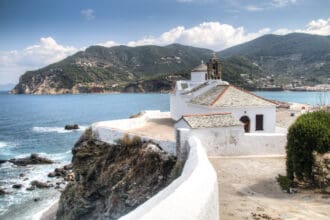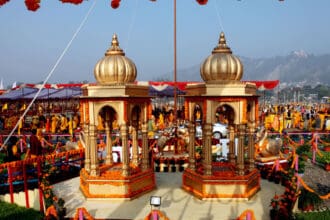When it comes to natural beauty, India has a lot to offer. One such hidden gem is the Valley of Flowers National Park, located in the Chamoli district of Uttarakhand. The park is a UNESCO World Heritage Site, known for its stunning vistas of wildflowers, lush greenery, and breathtaking Himalayan landscapes. In this article, we will explore everything you need to know about the Valley of Flowers National Park, including its history, geography, flora, fauna, trekking routes, and much more.
History of Valley of Flowers National Park
The history of the Valley of Flowers National Park dates back to the 1930s when British mountaineers Frank S. Smythe, Eric Shipton, and R.L. Holdsworth discovered the park while returning from their successful Kamet expedition. They were amazed by the beauty of the valley and the unique collection of flowers found there. Later, in 1982, the park was declared a national park by the Indian government to protect its natural beauty and biodiversity.
Geography of Valley of Flowers National Park
The Valley of Flowers National Park is located in the western Himalayas, near the border between India and China. The park covers an area of 87.50 square kilometers and is situated at an altitude of 3,658 meters above sea level. The park is surrounded by high snow-capped mountains, including Nilgiri Parbat, Ratban Parbat, and Nar Parbat. The Pushpavati River flows through the valley, adding to its natural beauty.
Flora and Fauna of Valley of Flowers National Park
The Valley of Flowers National Park is home to a diverse range of flora and fauna. The park is known for its unique collection of alpine flowers, including Himalayan blue poppies, Himalayan bellflowers, Himalayan cobra lilies, and Himalayan primroses. The park is also home to several endangered species, such as the Asiatic black bear, Himalayan musk deer, and snow leopard. Birdwatchers can spot several species of birds in the park, including the Himalayan monal, western tragopan, and Himalayan snowcock.
Trekking Routes in Valley of Flowers National Park
The Valley of Flowers National Park is a popular destination for trekkers from around the world. The park is open from June to October and offers several trekking routes for visitors to explore. The most popular route is the 14-kilometer trek from Govindghat to Ghangaria, which takes visitors through lush green forests, gushing waterfalls, and small streams. From Ghangaria, visitors can take a 3-kilometer trek to reach the Valley of Flowers. Another popular route is the Hemkund Sahib trek, which takes visitors to the famous Hemkund Sahib Gurudwara and the stunning Hemkund Lake.
Best Time to Visit Valley of Flowers National Park
The best time to visit the Valley of Flowers National Park is from July to September when the flowers are in full bloom. During this time, the park is transformed into a magical land of colors, with thousands of flowers covering the valley floor. Visitors can also spot several species of butterflies and insects during this time.
How to Reach Valley of Flowers National Park
The Valley of Flowers National Park is well-connected to major cities in India by road, rail, and air. The nearest airport is Jolly Grant Airport in Dehradun, which is 292 kilometers away from the park. The nearest railway station is in Rishikesh, which is 273 kilometers away from the park. From Rishikesh, visitors can take a taxi or bus to reach Joshimath, which is the base camp for the trek to the park. From Joshimath, visitors can hire a taxi or take a shared jeep to reach Govindghat, which is the starting point of the trek.
Accommodation in Valley of Flowers National Park
There are several accommodation options available for visitors in the Valley of Flowers National Park. In Ghangaria, visitors can find budget hotels, guesthouses, and tents. Visitors can also stay at the Hemkund Sahib Gurudwara, which provides free accommodation and meals to pilgrims. It is important to note that visitors need to carry their own food and camping equipment for the trek to the park.
Conservation Efforts in Valley of Flowers National Park
The Valley of Flowers National Park is a protected area, and several conservation efforts are being taken to preserve its natural beauty and biodiversity. The park is a part of the Nanda Devi Biosphere Reserve, which is a UNESCO World Heritage Site. The park is also a part of the Western Himalayas Endemic Bird Area, which is a conservation hotspot. Visitors are not allowed to pluck flowers or disturb the natural ecosystem of the park.
Conclusion
The Valley of Flowers National Park is a hidden gem of India that offers a unique experience for nature lovers and trekkers. Its stunning vistas of wildflowers, lush greenery, and breathtaking Himalayan landscapes make it a must-visit destination for anyone looking to explore the beauty of India. The park’s rich history, diverse flora and fauna, trekking routes, and conservation efforts make it a truly special place that needs to be protected for future generations.
FAQs
- Can I visit the Valley of Flowers National Park throughout the year?
- No, the park is open from June to October only.
- Are there any medical facilities available in the park?
- No, visitors need to carry their own first aid kit and medicines.
- Is it safe to trek to the Valley of Flowers National Park?
- Yes, it is safe to trek to the park, but visitors need to take necessary precautions and hire a guide if needed.
- Can I hire a porter to carry my luggage during the trek?
- Yes, visitors can hire porters at Govindghat or Ghangaria.
- Are there any restrictions on photography in the park?
- Visitors are allowed to take photographs for personal use, but commercial photography requires permission from the forest department.






